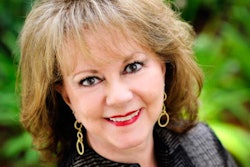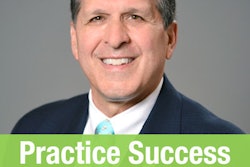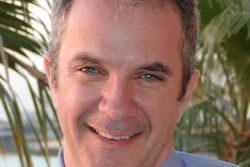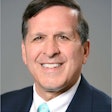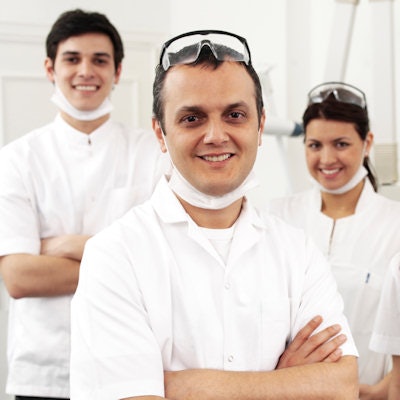
The dental team is changing. It seems everyone is trying to find a solution to increase access to oral healthcare for millions of Americans, and, for the past 10 years, the ADA's answer has been community dental health coordinators (CDHCs).
A CDHC is reminiscent of a navigator or case manager in the medical field but with the training and education of a dental professional. After completing a certificate program, a coordinator provides community outreach, patient advocacy, and dental education to communities that might not know how to access oral healthcare or why it's important.
"In the CDHC world, you may have a dental professional, such as a hygienist or assistant, out in the community with a laptop or doing a presentation and linking patients to care externally," said Jane Grover, DDS, MPH, director of the ADA Council on Access, Prevention, and Interprofessional Relations, in an interview with DrBicuspid.com. "So there is a middle person. There is a facilitator. There is a case manager who assists with that linkage."
10 years
In 2004, the ADA set out to explore how dentistry could better meet the needs of underserved communities, and, in 2006, the association unveiled its answer -- the Community Dental Health Coordinator program.
 Jane Grover, DDS, MPH, is the director of the ADA Council on Access, Prevention, and Interprofessional Relations.
Jane Grover, DDS, MPH, is the director of the ADA Council on Access, Prevention, and Interprofessional Relations.Through online or in-person coursework, CDHCs learn how to develop community-based oral health promotion programs, screen for dental diseases, and provide preventive services if qualified to in their state of employment. These coordinators are currently working in various locations, doing everything from enabling private practices and community clinics to reach new patients to being an oral health point person for hospital emergency department teams.
The coordinators also appear to be succeeding in their mission to increase the number of patients getting treatment. After analyzing data from the pilot program, the ADA found that CDHCs had an almost immediate effect in the places they were employed.
For example, one community health center in the pilot program performed more than 1,000 additional procedures in the year immediately after adding a CDHC, according to the ADA's 2013 final CDHC pilot program report. The same clinic increased the total care value from $91,000 to $232,000 in one year.
"Many folks, even those with commercial dental insurance, are not utilizing their dental insurance," Dr. Grover said. "So community outreach and case management and navigation is very beneficial to a private practice as it is to a community clinic."
CDHCs in the dental office
Charles Seleen, DMD, director of the nonprofit Vermont Dental Care Program, echoes the praises for CDHCs. About a year ago, the Vermont program took on a newly graduated community dental health coordinator as a trial in one of its two clinics. In the short time she was at the clinic, the CDHC set up a way to get children without a dental home from the local school district to Dr. Seleen's chair.
 Charles Seleen, DMD, is the director of the nonprofit Vermont Dental Care Program.
Charles Seleen, DMD, is the director of the nonprofit Vermont Dental Care Program."They are innovative," Dr. Seleen said in an interview with DrBicuspid.com. "And they could really provide what I consider to be a missing link in the social service aspect of delivering dental care."
Now that the trial program has ended, two of Dr. Seleen's employees, a hygienist and an assistant, are enrolled in an online course to become CDHCs thanks to scholarships from the college and the ADA. Although Dr. Seleen isn't quite sure how he wants to use them yet, he sees a couple of dental practice models that work with a community dental health coordinator.
For example, the CDHC could be hired as a full-time, dedicated staff person, which may be feasible for a federally qualified health center or a group of smaller practices that come together. Or, the CDHC could be a hygienist or an assistant that splits his or her week between working in the office and the community.
"It might give us the ability to expand if there's patient population groups who need these services," Dr. Seleen said. "Our goal in dentistry is to find a dental home for every patient out there."
CDHCs role in the changing dental landscape
Although community dental health coordinators appear to have a positive impact as part of the dental team, the role is still relatively unknown a decade after they were first proposed by the ADA. Two primary challenges stand in the way of CDHCs' expansion, according to Dr. Grover.
First, the position is still a novel concept for most dental teams. Second, it takes time to get community colleges and technical colleges to add another course to their curriculum.
However, the program is growing. Since the full-scale rollout of the Community Dental Health Coordinator project about two years ago, 80 CDHCs are set to join the 37 that completed the pilot program, according to Dr. Grover.
Yet while the CDHC program has been revving up, it appears other dental team models, primarily ones involving midlevel providers such as dental therapists, also have been gaining support. Proponents of midlevel providers are concerned that there are not enough affordable providers even if communities know how to get dental care.
Dr. Seleen is skeptical that midlevel providers alone can solve the access-to-care problem in the U.S. or in his home state of Vermont, but he also believes the future can employ both solutions.
"Dental therapists are in the same boat dentists are going to be in. How do people know where you are and if you're willing to see them?" he said. "CDHCs would be very good for both models. They're complementary."




